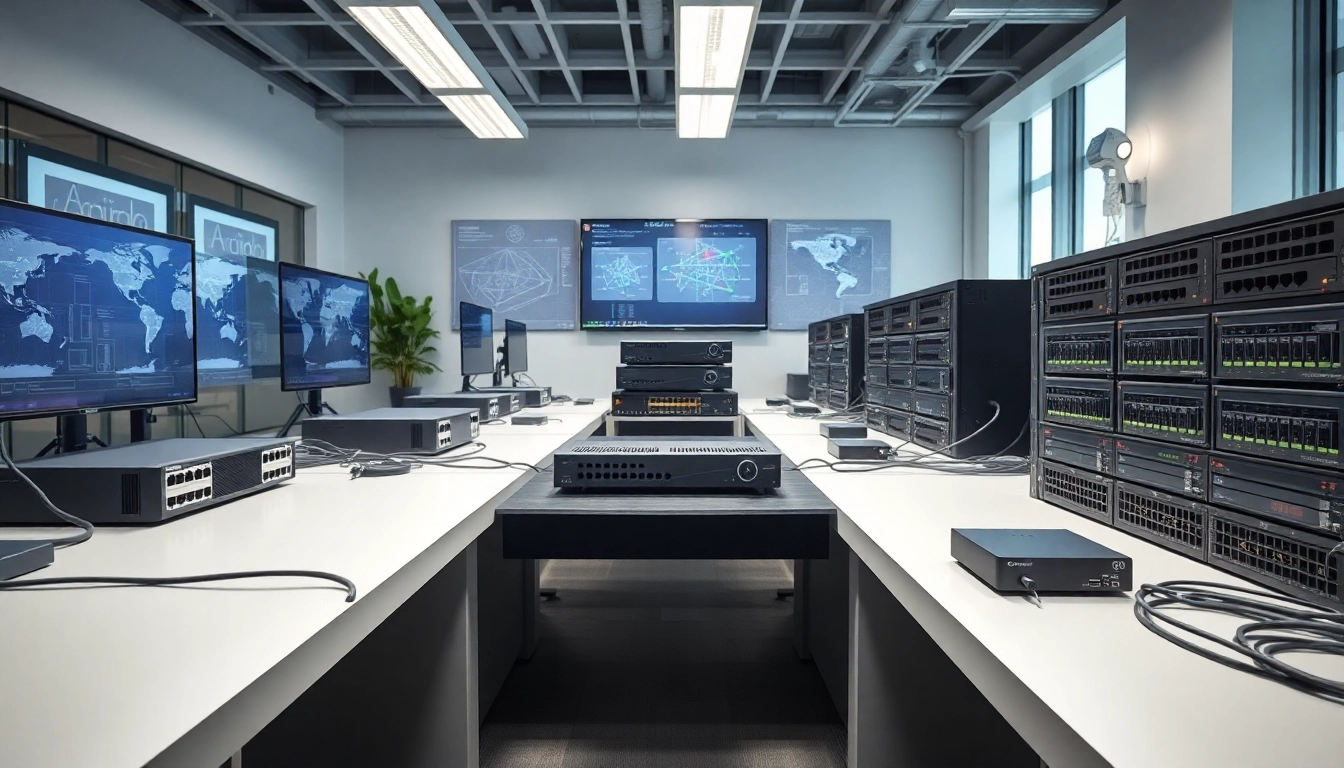1. What is Network Infrastructure?
1.1 Definition and Overview
Network infrastructure is the backbone of modern communication systems and business operations. It encompasses the hardware and software that facilitate communication between users, devices, applications, and the internet. Not only does it enable connectivity, but it also plays a vital role in enhancing the efficiency and productivity of businesses. Essentially, network infrastructure is a collection of components—such as routers, switches, firewalls, and management software—that work together to provide seamless communication and data transfer. Understanding network infrastructure is imperative for organizations eager to leverage technology effectively in our digital age.
1.2 Key Components of Network Infrastructure
The structure of network infrastructure is multifaceted, comprising various elements that work harmoniously. These include:
- Hardware: This includes physical devices such as routers, switches, firewalls, servers, and cables that connect the entire system.
- Software: Network management tools, operating systems, and applications that ensure the hardware components operate efficiently while providing necessary functionalities.
- Protocols: Sets of rules that dictate how data is transmitted over the network, ensuring interoperability between different devices.
1.3 Importance of Network Infrastructure in Modern Businesses
The significance of robust network infrastructure extends far beyond mere connectivity. A well-designed network supports key business operations and impacts several areas:
- Communication: Facilitates real-time communication among teams, enhancing collaboration and productivity.
- Data Management: Ensures efficient data storage and retrieval through advanced centralized systems.
- Remote Access: Supports remote work by connecting users from various locations securely.
- Business Continuity: Strengthens disaster recovery processes, ensuring operations can resume quickly after disruptions.
2. Core Components of Network Infrastructure
2.1 Hardware Components: Routers, Switches, and Cables
Hardware forms the physical foundation of a network. Key components include:
- Routers: Devices that route data between networks, ensuring messages reach their intended destinations.
- Switches: Network devices that connect devices within a single network, managing data transfer effectively.
- Cables: Physical mediums, like fiber optics or cables, that facilitate data transfer between devices.
Choosing the right combination of these hardware elements is crucial, as they determine the speed, efficiency, and capacity of the network.
2.2 Software Components: Network Management Tools
Beyond hardware, software plays a critical role in managing and securing network infrastructure. Key software components include:
- Network Management Systems (NMS): Tools that monitor, manage, and optimize network performance by tracking bandwidth usage and logging errors.
- Firewall Applications: Software designed to prevent unauthorized access and protect sensitive data.
- Analytics Software: Programs that analyze network traffic patterns, helping organizations to make data-driven decisions.
2.3 Data Centers and Their Role in Network Infrastructure
Data centers are centralized locations for storing, managing, and disseminating data. They are crucial for:
- Resource Allocation: Providing a centralized hub from which resources can be managed more effectively.
- Scalability: Supporting the growth of network infrastructure as organizational needs expand.
- Disaster Recovery: Offering backup solutions that ensure data integrity and accessibility during emergencies.
As organizations move further into cloud computing and virtualization, the role of data centers continues to evolve, emphasizing the importance of efficient network infrastructure.
3. Benefits of a Robust Network Infrastructure
3.1 Enhanced Connectivity and Communication
A well-designed network infrastructure significantly enhances connectivity, enabling faster and more reliable communication between devices, users, and applications. This connectivity is critical for ensuring employees can collaborate seamlessly, access necessary tools, and communicate effectively.
3.2 Improved Security Protocols
With cyber threats on the rise, robust network infrastructure should include advanced security protocols, such as firewalls, intrusion detection systems, and encryption technologies. These measures protect sensitive data and ensure compliance with industry regulations.
3.3 Scalability for Future Growth
One of the most notable advantages of a well-architected network infrastructure is its inherent scalability. As businesses grow or shift, their network infrastructure can adapt to accommodate new technologies, additional users, and increased data flow. This adaptability ensures organizations do not outgrow their systems, preventing costly downtime and reconfiguration.
4. Challenges in Network Infrastructure Management
4.1 Common Network Infrastructure Issues
Network infrastructure management comes with its unique set of challenges, including:
- Network Congestion: Excessive traffic can lead to slow response times and reduced efficiency.
- Compatibility Issues: Different hardware and software components may not work cohesively, leading to operational disruptions.
- Cybersecurity Threats: Given the increasing sophistication of cyber attacks, infrastructure needs robust defenses to protect against vulnerabilities.
4.2 Best Practices for Maintaining Network Infrastructure
To navigate these challenges successfully, organizations should consider the following best practices:
- Regular Audits: Conduct routine assessments to identify vulnerabilities and areas for improvement.
- Employee Training: Regularly train staff on safe network practices and emerging cyber threats.
- System Updates: Ensure that both hardware and software are regularly updated to enhance performance and security.
4.3 Future Technologies Influencing Network Infrastructure
Future trends like 5G, Artificial Intelligence (AI), and IoT are expected to revolutionize network infrastructure. These technologies will enhance data handling capabilities, improve connectivity, and introduce smart functionalities that can predict and manage network usage more effectively.
5. Evaluating Your Network Infrastructure
5.1 Key Performance Metrics and KPIs
To ensure network performance meets organizational goals, it’s important to evaluate various performance metrics like:
- Bandwidth Usage: Measures how much data is being sent and received across the network.
- Latency: Evaluates delays in data transmission, impacting user experience.
- Error Rates: Monitors the frequency of errors in transmission, highlighting possible issues in connectivity or hardware failure.
5.2 Tools for Assessing Network Infrastructure Efficiency
Utilizing specialized tools helps organizations monitor and assess their network’s performance. Some popular tools include:
- Pinger: A simple tool used to analyze the reachability of hosts on a network.
- Wireshark: A network protocol analyzer that provides detailed insights into network traffic.
- SolarWinds Orion Platform: Comprehensive software that monitors every aspect of system performance.
5.3 Case Studies: Successful Network Infrastructure Implementation
Analyzing successful case studies helps organizations understand the impact of tailored network infrastructure. For instance, a leading technology firm significantly reduced operational costs and improved functionality by transitioning to a cloud-based network, which also supported remote work environments during the pandemic. By investing in real-time monitoring tools, the organization gained insights that drove further enhancements in its infrastructure.



